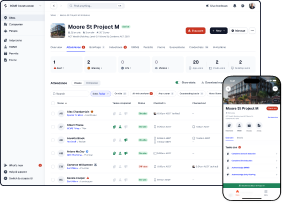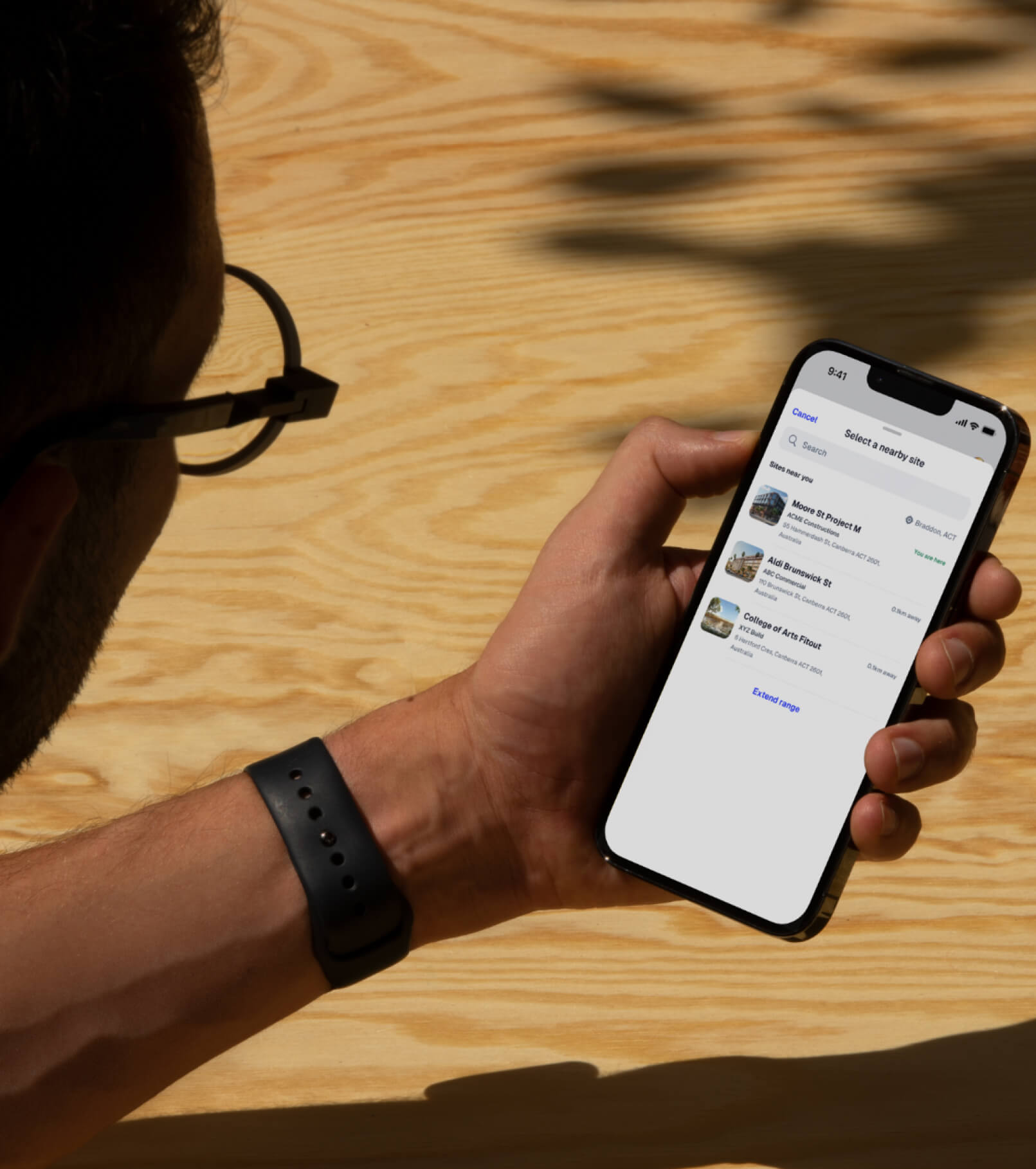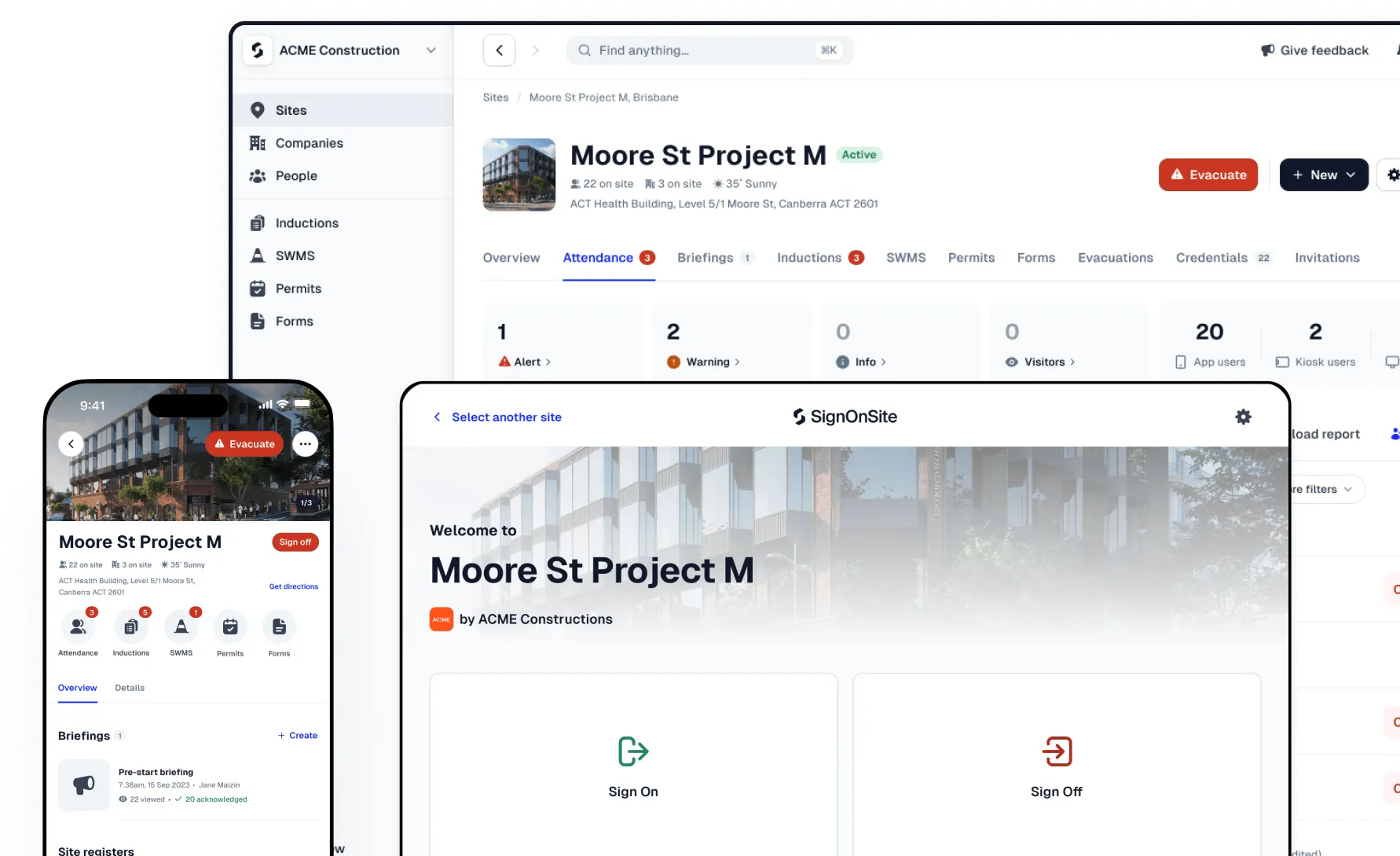Connected Workers - the next evolution in construction technology
December 21, 2020


Ten years ago, in 2010, it wasn't uncommon for a Project Manager or Site Manager to have a work-issued iPhone or Samsung Galaxy. White-collar employees were given access to employer-supplied smartphones so that they would have the technology to work better and faster. But the other 95% of people on site - the workers - haven't been bought into the mix.
This is despite the fact they are the most important stakeholder in the construction processes - they are they ones who build. They also have the best information - what is happening on-site, what is being overlooked, what needs to be done next.
One of the reasons they haven't been bought into the ecosystem is cost and complexity. Traditionally, this would have meant rolling out and maintaining hardware and software to thousands of people.
But today, we have near-complete adoption of smartphones, mobile internet and wi-fi.
The infrastructure to enable connected workers has been here for quite a few years. The missing piece is a platform that connects workers using the infrastructure that is already around us, including on construction sites.
What is it?
For the construction industry, a Connected Worker is a frontline worker who has been given genuinely useful tools that bring them into the technology ecosystem of an organisation.
It isn't about putting robots, drones or exoskeletons on sites - it's about leveraging connected technology to make it easier for the average worker to get on-site, do their job and return home safely.
The most practical way to do that is to use the technology that's already on-site: the mobile phone that is already in everyone's pocket.
By providing genuinely useful technology, which is easily accessible, we can make frontline workers active participants of the technology ecosystem - building bridges of communication and information.
The organisation can leverage the very same connected technology to co-ordinate and manage projects more effectively, enable better communication and increase safety.
This is in contrast to just adding technology to the organisation, which is inherently hindered by being passive data sources which rely on enforcement of use.
Why is it worth doing?
The success of technology investments and transformation is dependent on the inclusion of all the key stakeholders - excluding 95% of the workforce doesn't help achieve that outcome.
A construction company with Connected Workers has the ability to:
- Communicate with the entire workforce in real-time (which can help with site work co-ordination, safety notifications and resource management);
- Streamline (or even automate) information processes (which can replace the paper forms that get shoved in a site filing cabinet);
- Get insights from the frontline of worker (such as project progress, blockers, quality control issues or safety risks);
- Have their workers be actively engaged in processes (from project co-ordination to safety and quality assurance);
- Build data from the ground up (as everyone on site is a source of information and data, rather than the 5% of project professionals);
An alternative technology pathway is just adding technology at the company level, such as digitised forms on kiosks/QR codes or management systems that require supervisors to be the data source on behalf of the frontline worker.
These solutions have inherent disadvantages to Connected Worker systems:
- They are passive sources of data. Information from QR code forms/kiosk forms aren't collected in real-time. The accuracy of supervisor-driven tools are entirely dependent on the data entered by the supervisor.
- They need constant enforcement to be used. Supervisors often need to check if workers have used them correctly, which is unfeasible on large sites.
- They are static investments. These systems are generally designed to solve for one specific use case or scenario - they don't have the flexibility of Connected Worker systems.
You can learn more about the benefits of Connected Worker systems in our Blueprint.
How can you implement Connected Worker technology?
The Connected Worker concept is at its infancy, with a limited number of solutions available on the market.
There are no end-to-end, holistic solutions on the market, but there some systems that apply the Connected Worker concept to the construction industry:
- SignOnSite - safety, personnel and site management;
- iAuditor - inspection and issue management;
Other sectors, such as Industrial and Manufacturing, have systems such as:
- Hexagon;
- Honeywell Connected Worker Solutions;
- Oracle Connected Worker Cloud;
- Parsable;
The number of solutions available for the construction industry is limited because very few people understand how to create a product that frontline workers will adopt, and who can guide the change management process for construction companies.
SignOnSite has been providing Connected Worker solutions to the construction industry since 2013, working with our customers to develop the systems that work for the people on-site, as well as the contractors running projects.
If you are interested in learning more about implementing a Connected Worker solution at your company, get in touch with us today.









.svg)